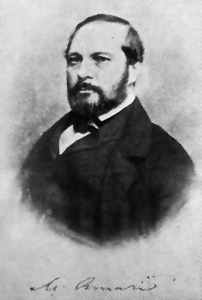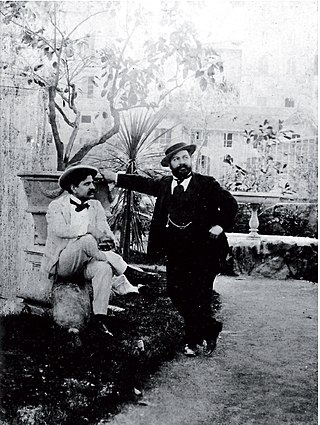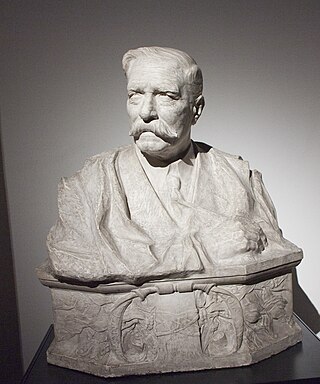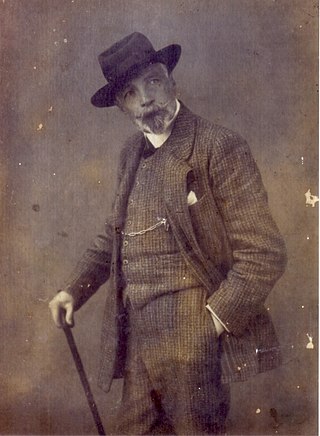
Michele Benedetto Gaetano Amari was a Sicilian patriot, liberal revolutionary and politician of aristocratic background, historian and orientalist. He rose to prominence as a champion of Sicilian independence from the Neapolitan Bourbon rule when he published his history of the War of the Sicilian Vespers in 1842. He was a minister in the Sicilian revolutionary government of 1848–9 and in Garibaldi's revolutionary cabinet in Sicily in 1860. Having embraced the cause of Italian unification, he helped prepare the annexation of Sicily by the Kingdom of Sardinia and was active in his later years as a senator of the Kingdom of Italy.

The Teatro Massimo Vittorio Emanuele is an opera house and opera company located on the Piazza Verdi in Palermo, Sicily. It was dedicated to King Victor Emanuel II. It is the biggest in Italy, and one of the largest of Europe, renowned for its perfect acoustics.
Enzo Sellerio was an Italian photographer, publisher, and collector.

Filadelfo Mugnos was an Italian historian, genealogist, poet and man of letters.

Guglielmo Borremans or Guglielmo Fiamingo (1670–1744) was a Flemish painter whose documented career took principally place in Italy, in particular Naples, Cosenza and Sicily. Here he was one of the pre-eminent late-Baroque fresco painters of the first half of the 17th century who received multiple commissions to decorate churches and palaces.
Lentini is an Italian surname and an occasional given name that may refer to the following notable people:

Mario Rutelli was an Italian sculptor.

Mese mariano is an opera in one act by Umberto Giordano. Its Italian libretto by Salvatore Di Giacomo was adapted from his play 'O Mese Mariano, which was in turn adapted from his novella, Senza vederlo. It premiered at the Teatro Massimo in Palermo on 17 March 1910. The opera is described as a bozzetto lirico and has a running time of 35 minutes. It tells the story of a woman who visits an orphanage to see her child. Racked with guilt at having abandoned him, she is unaware that he had died the night before.

Francesco Lojacono or Lo Jacono (1838–1915) was an Italian painter, mainly of landscapes and seascapes, and mainly active in his native Palermo, Sicily.
Luca Canonici is an Italian opera singer who has had an active career singing leading tenor roles both in Europe and his native Italy.

Carlo Sposito was an Italian character actor, sometimes credited as Carletto Sposito.
Rocco Lentini was an Italian painter, noted for directing the team responsible for the ceiling decorations of the Teatro Massimo in Palermo.

Antonino or Antonio Leto was an Italian painter, painting mainly genre/landscape subjects in an impressionistic style.

Angelo Italia was an Italian Jesuit and Baroque architect, who was born in Licata and died in Palermo. He designed a number of churches in Sicily, and later worked to reconstruct three cities following the 1693 Sicily earthquake.

Giuseppe Sciuti was an Italian painter.

The Politeama Theatre is a theatre of Palermo. It is located in the central Piazza Ruggero Settimo and represents the second most important theatre of the city after the Teatro Massimo. It houses the Orchestra Sinfonica Siciliana.

Michele Catti was an Italian artist, considered one of the most important Sicilian landscape painters of the Belle Époque.

Asmundo is an old Sicilian noble family that has played a notable role in the island's political, cultural, and economic history.
Ettore De Maria Bergler (1850–1938) was an Italian painter, known for his Stilo Liberty painting, but also proficient in genre and landscapes.

Benedetto Civiletti was an Italian sculptor, active mainly in his native Sicily. He is known for his Romantic-style public sculptures on allegorical, genre, or historical themes.

















